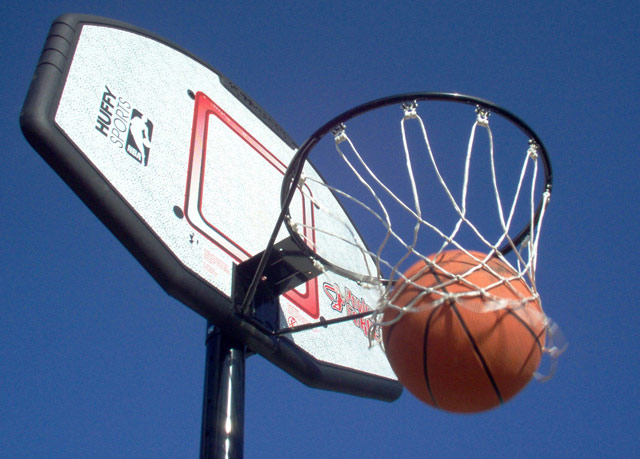Touchy-Feely NBA Teams More Likely to Win

Want to gauge your favorite basketball team's chances of success this season? According to a new study, the answer may be in the number of fist bumps the players throw.
The more time NBA players spend touching each other ⎯ slapping backs, bumping chests and exchanging high fives ⎯ the more successful they are, both as individuals and as a team, the research reveals. The reason seems to be that the most cooperative teams are also the most touchy-feely.
"It looks like at least in these really specific team settings, touch communicates cooperation and trust between people," study coauthor Michael Kraus, a post-doctoral researcher at the University of California, San Francisco, told LiveScience. "So in our study, touching is highly correlated with cooperative behaviors."
Kraus, who completed the work as a doctoral student at the University of California, Berkeley, reported the study results in the current issue of the journal Emotion, just in time for the 2010 NBA season, which started Oct. 26. The college basketball season started yesterday (Nov. 8).
Fist bumps for success
Touch is not extensively studied, Kraus said, but it's an important method of communication. Results from the few previous studies have shown that people can detect emotions such as sympathy and love based on just one-second touches to the forearm.
Kraus and his colleagues chose to study basketball players, because teams have a "rich language of touch," Kraus said. According to the study, the language includes, "fist bumps, high fives, chest bumps, leaping shoulder bumps, chest punches, head slaps, head grabs, low fives, high tens, full hugs, half hugs, and team huddles."
Get the world’s most fascinating discoveries delivered straight to your inbox.
The researchers taped the 2008-2009 early-season NBA games from all 30 teams and recorded the amount of time the players spent high-fiving, chest-bumping and otherwise making intentional physical contact. (Basketball-related moves like blocking another player weren't counted.) Then they followed the teams' successes throughout the season.
Let's get physical
They found that the more touching a team engaged in, the better they played. To be sure there weren't extraneous variables affecting the results, the researchers controlled for player salary (to ensure that better, highly paid players weren't just touching more), preseason expectation (to ensure that teams with high expectations weren't simply more demonstrative) and early season performance (to ensure that better-playing teams weren't touching more as a result of their success).
None of those factors explained the touch-success connection. Instead, touch was closely linked with more cooperative play, like passing the ball to another teammate instead of taking an ill-advised shot.
The study can't determine whether touching boosts cooperation or whether cooperation boosts touching, but it's likely both, Kraus said. Laboratory research has found that pats on the back in a workplace setting improve cooperation, he said, so there is some evidence for causation.
The results would likely translate to other sports like football, Kraus said, but whether they're meaningful for office-bound types is unknown. People may be less comfortable with touching in mixed-gender groups, and American culture tends to emphasize personal space, Kraus said. He and his colleagues are now conducting laboratory experiments to investigate how touch works outside the world of sports.

Stephanie Pappas is a contributing writer for Live Science, covering topics ranging from geoscience to archaeology to the human brain and behavior. She was previously a senior writer for Live Science but is now a freelancer based in Denver, Colorado, and regularly contributes to Scientific American and The Monitor, the monthly magazine of the American Psychological Association. Stephanie received a bachelor's degree in psychology from the University of South Carolina and a graduate certificate in science communication from the University of California, Santa Cruz.


